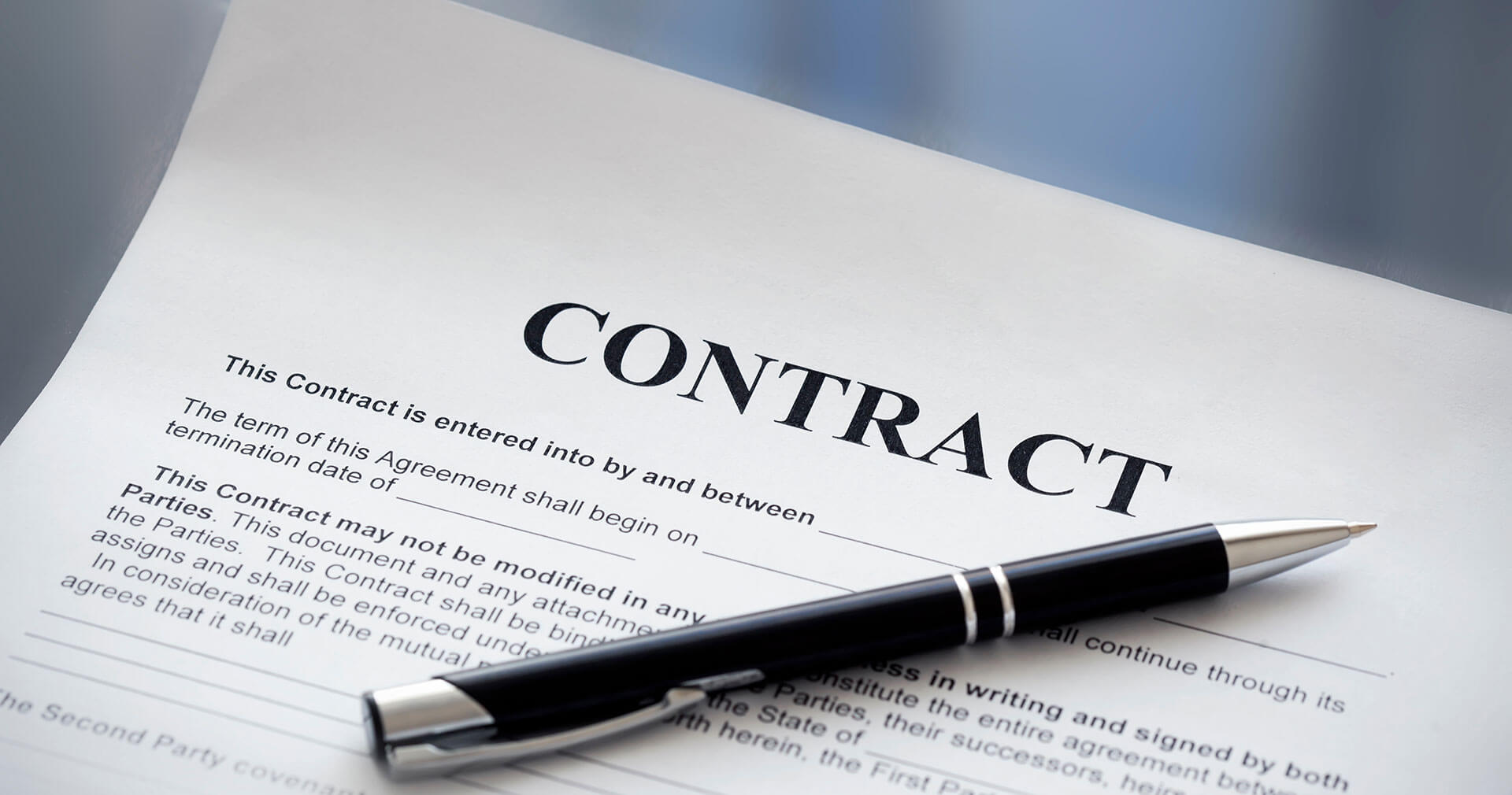How to Write a Lawn Care Contract (with Free Downloadable Template)
Use our lawn care contract template and tips to create and send contracts faster,...

In the pest control industry, getting rid of bedbugs or clearing out a termite infestation is a job well done. But helping your customers live pest-free isn’t the only measure of success. To build a profitable pest control business, you also have to keep a close eye on your bottom line and manage your operating costs.
Without enough profit, you won’t have the money you need to invest in pest control business operations or fuel growth in a competitive pest control market. You might struggle with cash flow issues and even face a higher risk of business failure. So, how do you know where your business stands as a pest control business owner?
It starts with calculating your profit margin.
This key metric acts as a financial health check for your company and shows if your pest control business profitability is on track. As a business owner or manager, you should understand not just how to calculate your profit margin, but also how to use pricing strategies, improve operational efficiency, and apply smart marketing strategies to keep your pest control business profitable.
Additionally, investing in reliable pest control business management software can further boost your profits. In this article, we’ll take a deep dive into pest control profit margins and detail what you need to know to build a stronger, more profitable operation.

Profit margin is a metric that tells you how much your pest control company earns as profit for every dollar you generate in revenue. It’s the part of sales revenue your business gets to keep after accounting for costs.
Whether you’re starting a new pest control business or you’ve been operating in the space for years, you need to measure your profitability to know you’re in good financial shape.
If your profit margin is low or negative, you need to make changes to your pricing strategy, sales, or costs to boost profits. And when it’s high, you can look at ways to invest in your business to increase profits even further.
RELATED ARTICLE: Picking the Best Software for Your Pest Control Company
According to data shared by BusinessHue, a small pest control business with about five employees should be able to keep about 15% of its revenue as net profit.
In general, a net profit margin between 7% and 10% is considered healthy for a small business. Anything above 20% is considered great.
Your gross profit margin, which looks at your gross profit rather than net profits, should be higher. Across all industries, gross profit margins average 33%.
But because you’re a service-based business, you don’t have the material costs of a product-based company. This means your gross margin should be even higher than that 33% standard. Ideally, it’s closer to 40% or 45%.
If you’re a new business, you might not turn a good profit in the first couple of years. That’s because you must invest more in your pest control company at the outset to get your business off the ground.
So, don’t worry if your profit margin isn’t high right away. You’ll get there.
Profit margin isn’t just a vanity metric, it’s a clear reflection of your pest control business’s financial health and efficiency in providing pest control services. It also impacts your company’s valuation, your access to funding, and even your reputation with commercial clients and local businesses.
If you’re a business owner, your income will rise or fall alongside your net profit margin. First, your profit must cover all business costs, including labor costs, overhead costs, variable costs, fixed costs, and operational costs such as fuel, equipment, and supplies.
What’s left after accounting for direct and indirect costs is your net income. That’s why a healthy profit margin can give you a significant raise.
A high profit margin also fuels business growth and future success.
With strong margins, you’re able to reinvest in your operation. That means you have funds available to:
A consistently low profit margin is a warning sign that your business may be at financial risk.
If your profit margin is weak year after year, you may need to seek outside financing or dip into your business savings just to cover everyday expenses. When cash flow suffers, you’re more likely to face challenges with customer acquisition and meeting payroll, risking the stability of your company.
Draining your working capital or relying too heavily on debt can cause persistent cash flow problems. And in the pest control industry, cash flow issues remain a leading cause of business failure in 80% of businesses.
Your profit margin also impacts your pest control company’s creditworthiness. If you have a negative profit margin, lenders are less likely to finance your business. This means you’ll struggle to get loans.
FROM ONE OF OUR PARTNERS: The 8 “P’s” to Maintaining a Profitable Business
Many different factors can affect your profit margins as a pest control business owner. Competitive pricing, service quality, growth strategies, and your ability to leverage software solutions all play a significant role in your bottom line.
As the industry continues to evolve, so do the best practices for measuring operating profit margin, planning for startup costs, and adapting to new service trends in your local market. Staying informed and proactive is key to keeping your business profitable and competitive.
It’s also important to keep an eye on emerging trends that are shaping the industry. Consider, for example, the growing demand for mosquito control, pest prevention services, and personalized service. These trends can impact many facets of your pest control business, such as:
By staying aware of changing market conditions, your business can better adapt to them while still maximizing profits and operating efficiently.

You can easily calculate your gross margin and your net margin. Your gross profit margin is your gross profit (revenue minus direct costs) divided by revenue. You’ll multiply your result by 100 to get a percentage.
The formula to find your gross profit margin is:
Gross Margin = (Gross Profit / Revenue) x 100
Here’s a step-by-step guide to calculating your pest control business’s gross profit margin:
These are the costs that go into producing one unit of output.
For your pest control company, a unit of output might be one hour of technician labor. If you pay your technicians $42 per hour and you spend $6 in pest control supplies for a one-hour service call, your direct cost is $48 per unit.
If your business charges $100 per hour for your pest control services, that’s your revenue.
You can calculate your gross profit by subtracting your direct costs from your revenue:
Gross Profit = $100 – $48 = $52
To calculate the gross margin, divide your gross profit by revenue and multiply by 100:
Gross Profit Margin = ($52 / $100) x 100 = 52%
The formula for the net profit margin is similar. The difference is you’re using net profit instead of gross profits.
Net Profit Margin = (Net Profit / Revenue) x 100
Net profit, also known as net income, is what you have remaining after subtracting all costs, not just the direct costs. So you’re subtracting your direct labor and material costs as well as:
Let’s look at an example.
Fred’s Pest Control wants to determine its profit margin for the past year. Here are the end-of-year numbers for the business:
To calculate the net profit margin, Fred’s Pest Control divides the net profit by revenue:
Net Profit Margin = ($62,400 / $180,500) x 100 = 34.57%
Discovering your net profit margin is above 20% is good news! But what happens when your profit margin is too low?
FROM ONE OF OUR PARTNERS: Flat Rate or Time & Materials — Which Pricing Should You Use?
Boosting profitability will give your pest control business more financial flexibility. There are many ways to increase profits. Anything you do to bump up your sales revenue or decrease costs will move the needle.
Here are five things you can do today to increase profitability.
Decide what your profit margin should be for the next month, quarter, and year. Then create a plan to get there.
Offer your technicians a bonus or another incentive for upselling your pest control services.
Research your competitors’ pricing. If your prices are lower or similar, consider increasing the cost of your pest control services to help your profit margin.
Home services businesses can stand out in a crowded local market if people trust the brand. One of the best (and most low-cost) ways to boost the trust factor is social media marketing.
You’ll reduce acquisition costs and increase your profits by encouraging repeat business with your existing customers.
FROM ONE OF OUR PARTNERS: 3 Ways to Turn One-Time Customers Into Lifetime Customers

It can cost five times more to acquire a new customer than to retain an existing one. Not only that, but returning customers also spend 67% more than new ones, on average. That’s why taking steps to increase repeat business can make a big impact on profits.
To keep your existing pest control customers and boost your profit margin, you can:
Ants, mosquitoes, termites, mice—a lot of these pests make a comeback when the seasons change. Help your customers avoid an infestation with a service plan that includes preventative care.
Make sure everyone on your team is on the same page about customer service. You want your customers to have a flawless experience at every touchpoint, from calling to schedule an appointment to meeting with your technician.
Stay in touch with your customers via email. Ask them to share their email when they sign up for pest control services, then keep in touch with offers for discounts and other incentives to buy.
As you put these profit-boosting steps into action, calculate your pest control business’s profit margin over time so you can track the results.
About the Author
Dan works with his family’s pest control companies in Kentucky. He’s involved in all aspects of operations, from hiring to servicing jobs. He also hosts a YouTube channel, Dan the Bug Man, where he explores a variety of pest control business topics.

Use our lawn care contract template and tips to create and send contracts faster,...

Lawn care conferences give you access to like-minded professionals, networking opportunities, new trends and...

Have you always felt comfortable with, and maybe even fascinated by, bugs and rodents?...